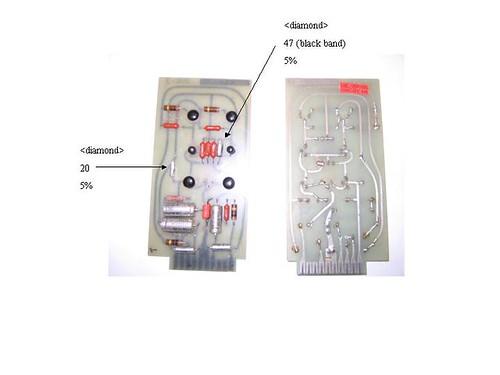buschfsu
Well-known member
so i have a friend with 10 flickinger 290-3 cards. since they are probably custom i tried to trace the schematic using guesses based on spectrasonics 101 and 110 schematics. ( note the polarity on the tats was left out.oops) Anyway couple questions....
what the hell are those clear/white things?
One checks out as a diode (has a diamond with 47 and 5%) has a black band on one end and read .67v
other has a diamond and a 20 with 5% but doesn't appear to be a diode or cap or resistor? i don't have a clue?
next question. anyone have a pinout for a perfectly round TO-105? there doesn't seem to be a way to differential C from E?
anyway i tried to trace the card and any feedback would be appreciated. I want these done right!!!

UPDATE: I used a 50k pot. worked better than the 10k. Als used 2n5210 for the npn's and 2n5087 for the pnp's. matched hfe on the input npn pair. they sound great.
:grin:
what the hell are those clear/white things?
One checks out as a diode (has a diamond with 47 and 5%) has a black band on one end and read .67v
other has a diamond and a 20 with 5% but doesn't appear to be a diode or cap or resistor? i don't have a clue?
next question. anyone have a pinout for a perfectly round TO-105? there doesn't seem to be a way to differential C from E?
anyway i tried to trace the card and any feedback would be appreciated. I want these done right!!!

UPDATE: I used a 50k pot. worked better than the 10k. Als used 2n5210 for the npn's and 2n5087 for the pnp's. matched hfe on the input npn pair. they sound great.
:grin:





